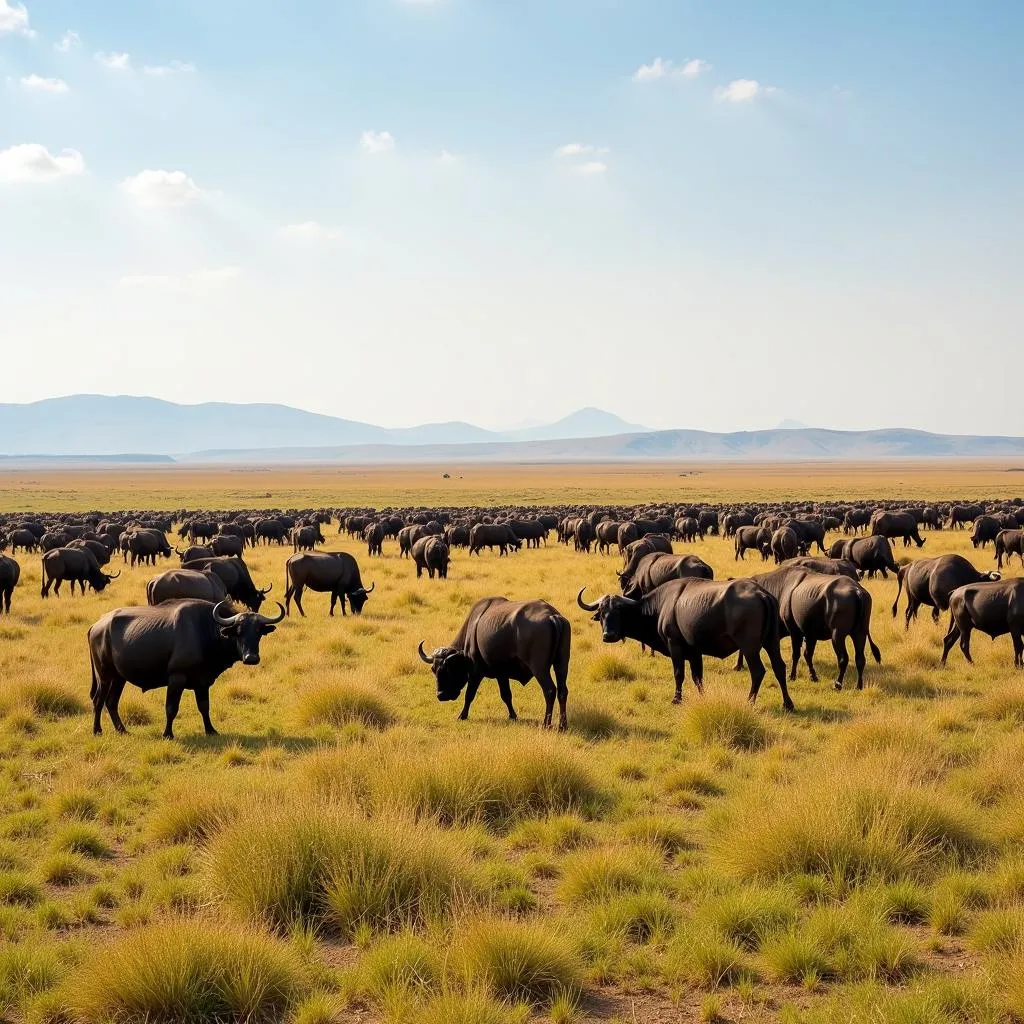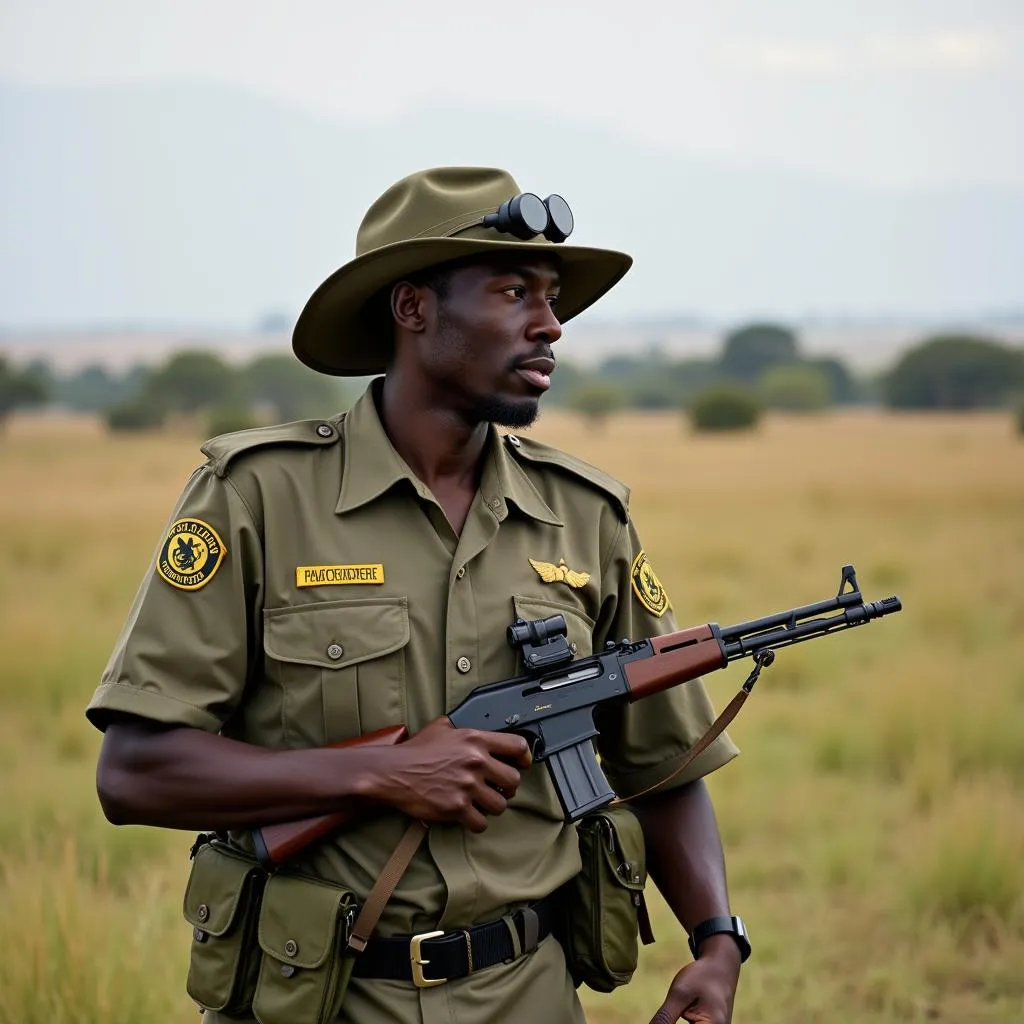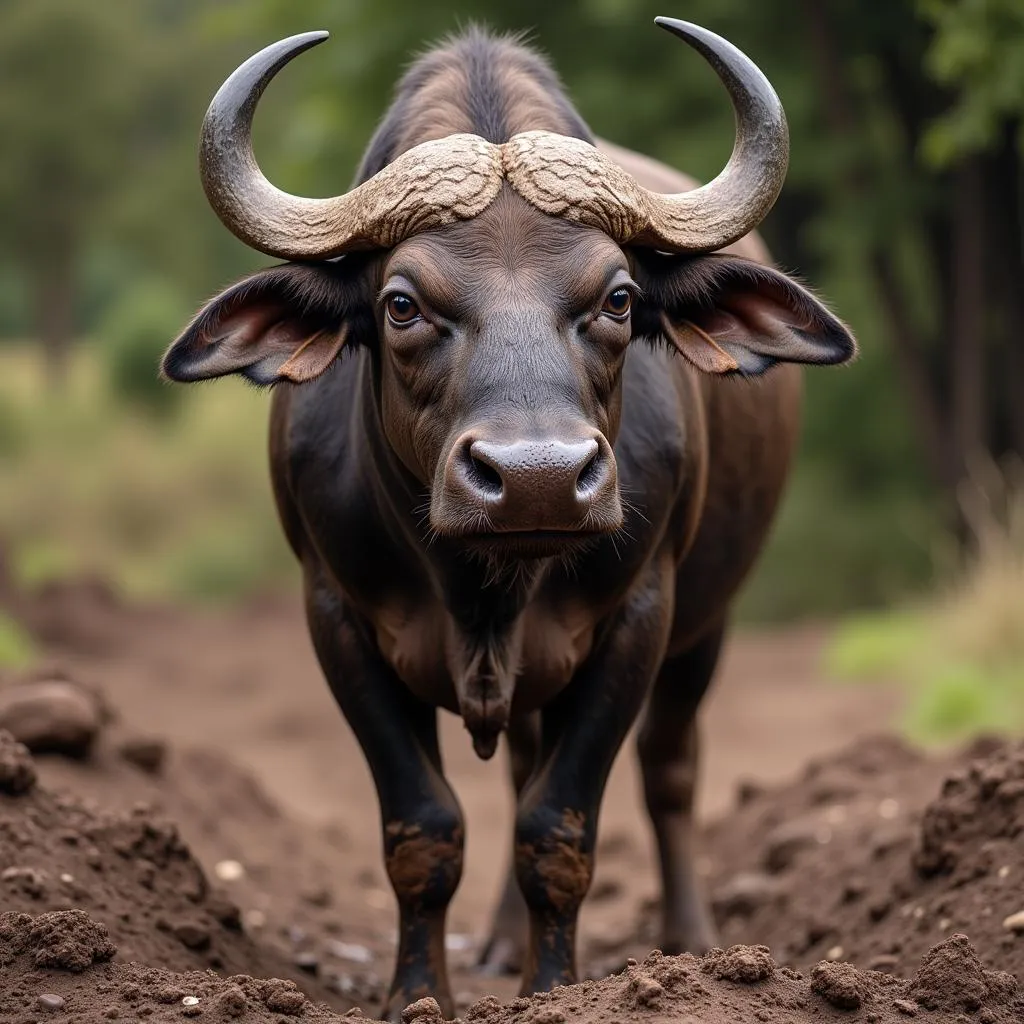African Buffalo Population: A Majestic Beast Under Threat
The African buffalo, a formidable herbivore that roams the savannas and woodlands of sub-Saharan Africa, is an iconic symbol of the continent’s wildlife. Often seen in large herds, these powerful creatures play a vital role in their ecosystem. However, the African Buffalo Population faces numerous challenges, including habitat loss, disease, and poaching, which threaten their long-term survival.
Factors Affecting African Buffalo Population
Several factors contribute to the fluctuation of African buffalo populations across the continent. Understanding these factors is crucial for effective conservation efforts.
Habitat Loss and Fragmentation
 A herd of African buffalo grazing on the vast African savanna
A herd of African buffalo grazing on the vast African savanna
As human populations expand and agricultural activities intensify, the natural habitats of African buffalo are being converted into farmland, settlements, and infrastructure. This habitat loss forces buffalo herds into smaller and more fragmented areas, increasing competition for resources and making them more susceptible to disease outbreaks.
Diseases and Parasites
African buffalo are vulnerable to a range of diseases, with the most significant being bovine tuberculosis (TB) and rinderpest. TB, transmitted from cattle, can decimate buffalo populations, while rinderpest, a highly contagious viral disease, has caused widespread mortality in the past. Though rinderpest has been largely eradicated, the threat of its reemergence remains a concern.
Poaching and Illegal Hunting
 An anti-poaching ranger patrolling the African savanna
An anti-poaching ranger patrolling the African savanna
Poaching for meat, horns, and hides poses a significant threat to African buffalo populations. The demand for bushmeat, particularly in areas with limited access to protein sources, drives illegal hunting. Furthermore, the illegal wildlife trade, fueled by demand for buffalo horns and other body parts, continues to decimate populations in certain regions.
Conservation Efforts
Recognizing the importance of African buffalo, conservationists and governments are implementing various strategies to protect these magnificent creatures.
Protected Areas and National Parks
National parks and protected areas play a crucial role in safeguarding African buffalo populations. These areas provide safe havens where buffalo can roam freely, reducing the threats of habitat loss, poaching, and human-wildlife conflict.
Community-Based Conservation
Engaging local communities in conservation efforts is vital for long-term success. Community-based conservation programs empower local people to become stewards of their natural resources, fostering a sense of ownership and responsibility for wildlife protection.
Anti-Poaching Measures
 A lone African buffalo standing in a mud wallow
A lone African buffalo standing in a mud wallow
Strengthening anti-poaching patrols, improving law enforcement, and raising awareness about the illegal wildlife trade are essential for reducing poaching pressure on African buffalo populations. Collaborations between governments, conservation organizations, and local communities are key to combating this threat.
The Future of African Buffalo
The future of the African buffalo hinges on the success of ongoing conservation efforts. By addressing the threats of habitat loss, disease, and poaching, we can ensure that these iconic creatures continue to roam the African landscape for generations to come.
FAQs
What is the current population of African buffalo?
Estimating the exact population is challenging due to their wide distribution and varying population densities. However, the International Union for Conservation of Nature (IUCN) estimates that there are approximately 900,000 African buffalo remaining in the wild.
What is the role of African buffalo in the ecosystem?
African buffalo are keystone species, meaning they play a critical role in maintaining the balance of their ecosystems. As grazers, they help to control vegetation growth, creating habitats for other species. Their dung also fertilizes the soil, promoting plant growth.
What are the main threats to African buffalo populations?
The main threats are habitat loss, disease (particularly bovine tuberculosis), and poaching.
How can I help conserve African buffalo?
You can support conservation organizations working to protect African buffalo, raise awareness about the threats they face, and advocate for policies that promote wildlife conservation.
Where can I see African buffalo in the wild?
African buffalo can be found in many national parks and game reserves throughout sub-Saharan Africa, including the Serengeti National Park in Tanzania, Kruger National Park in South Africa, and Hwange National Park in Zimbabwe.
Need More Information?
For more information about African wildlife and conservation efforts, please contact us:
Phone Number: +255768904061
Email: kaka.mag@gmail.com
Address: Mbarali DC Mawindi, Kangaga, Tanzania
Our team is available 24/7 to assist you.

